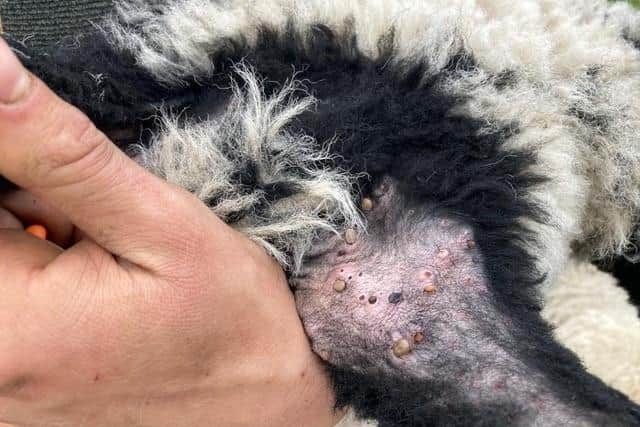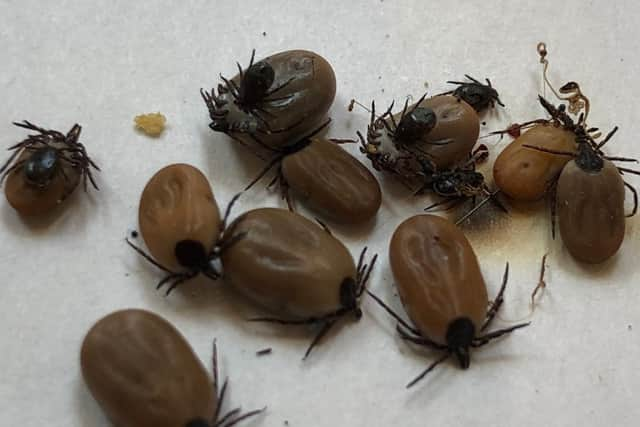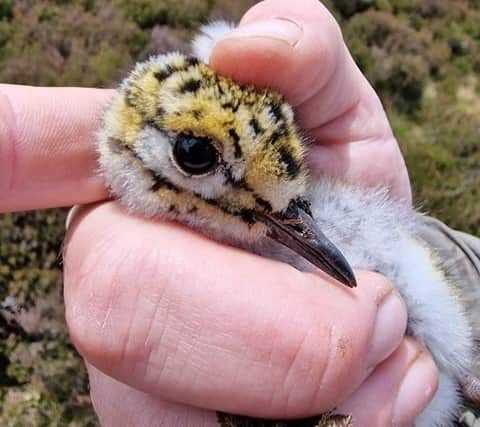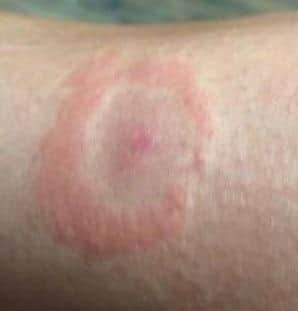Lyme disease warning as huge number of ticks reported in Peak District
and live on Freeview channel 276
Ticks are small blood-sucking arachnids which live in areas of grassland, moorland, forest and even in parks and gardens. They feed on livestock, deer, birds, mice, horses, pets and humans.
Ticks carry a range of diseases, with Lyme disease by far the most common in humans. Symptoms can be debilitating and include fatigue, headaches, dizziness and joint pain.
Advertisement
Hide AdAdvertisement
Hide AdIn severe cases, Lyme disease can cause heart problems and inflammation of the membranes surrounding the brain and spinal cord.


Moorland Association member Dan Richmond-Watson of Midhope Moor said: “We are seeing a stratospheric rise in tick numbers in the Peak District at the moment. There has been a perfect storm of contributing factors this year including a hot dry summer and a change in land management in the area – lack of conservation grazing, and limited vegetation burning and bracken spraying have all made matters far worse.”
In the UK, about 3,000 cases of Lyme disease are diagnosed each year, up tenfold from 2001, but due to similarities with other diseases (including Covid) the true number of infections may be far higher.
In most cases the disease responds well to treatment with antibiotics, particularly if caught early.
Advertisement
Hide AdAdvertisement
Hide AdHowever, Lyme disease is often very difficult to diagnose as the symptoms are similar to flu and ME amongst other diseases.


Dogs can also suffer from fever and lethargy following a tick bite.
Grouse moors are managed to prevent an over-abundance of tick-borne infections, which can prove fatal to red grouse, wading birds and sheep as well as causing disease in humans.
Bracken spraying and limiting the amount of excess vegetation reduces the areas where ticks can proliferate. Sheep are treated with an acaricide which is harmless to them but kills the ticks, to protect pets and people.
Advertisement
Hide AdAdvertisement
Hide AdDan Richmond-Watson added: “I would urge Natural England to reintroduce conservation grazing, removal of bracken and excess vegetation to help reduce the prevalence of tick and limit the spread of disease.”


Julia Knight of the charity Lyme Disease UK said: “Lyme disease is a serious bacterial infection and it is important that it is diagnosed and treated quickly and appropriately to prevent any long term symptoms occurring. Lyme disease is a preventable disease and awareness of it is key, not only amongst the general public but also frontline health professionals so it can be either prevented completely or recognised and treated quickly.”
Ticks – what to look out for:
- A good tip is to brush off your clothes outside before entering the house to dislodge ticks in clothing;
- Check your skin carefully for ticks, and check children and pets too;


- A tick may be about the size of a poppy seed initially;
Advertisement
Hide AdAdvertisement
Hide Ad- Children may have ticks attached higher up than adults would – check their whole bodies and scalp;
- If you find a tick, use a tick remover tool to carefully remove the tick and then wash the affected area with soap and water. Tick removal tools can be purchased in most chemists;
- Prevention is the best strategy - wear long trousers and long sleeves while out in the countryside and tuck your trousers into your socks. Consider using a tick repellent such as those containing DEET;
- Talk to your GP if you feel unwell following a tick bite - early treatment is crucial for the best chance of recovery;
Advertisement
Hide AdAdvertisement
Hide Ad- The Erythma Migrans (EM) rash signifies a Lyme disease infection. Not all EM rashes look like the textbook ‘bull’s-eye’ image with rings. They can be solid rashes or have a bruise like appearance. An EM rash takes 3 - 30 days to appear after a bite and slowly spreads outwards. On black and brown skin its appearance will be different and it may be missed more often.